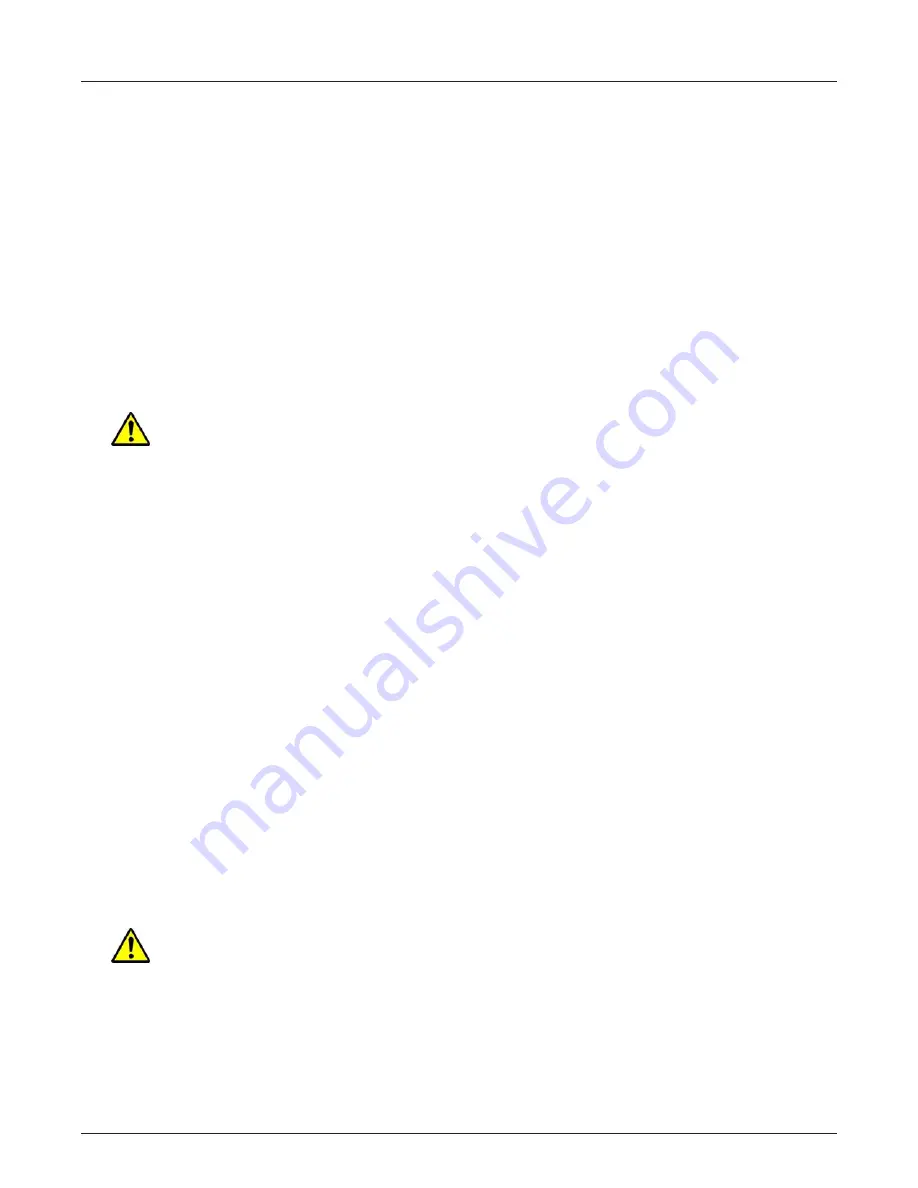
IonPac CS14 Manual
Doc. No. 034848-10
Page 15 of 54
CAUTION
When purging or degassing eluents containing solvents, do not purge or degas the eluent excessively since it is
possible that a volatile solvent can be “boiled” off from the solution.
Always degas and store all eluents in glass or plastic eluent bottles pressurized with helium. Only helium can be
used to purge and degas ionic eluents containing solvents, since nitrogen is soluble in solvent containing eluents.
Avoid creating high viscosity pressure fronts that may disrupt the column packing when the eluent solvent component is
changed.
To do this, equilibrate the column for approximately 10 minutes with an eluent containing only 5% of the current
solvent type. Exchange this eluent for an eluent with 5% of the new solvent type and then equilibrate the column and allow
the system to stabilize (approximately 10 minutes). Next run a 15-minute gradient from 5% of the new solvent type to the
highest percentage that will be used during the new analysis protocol.
Properly equilibrate the column when changing to a solvent-free eluent system after using eluents containing solvent.
First
equilibrate the column with 1 to 5 percent of the current solvent for approximately 5 minutes. Next run a 10-minute gradient
from the eluent with 1 to 5 percent of the current solvent to the new solvent free aqueous eluent.
The Cation Self-Regenerating Cation Suppressor (CSRS ULTRA) must be operated in the
AutoSuppression External Water Mode when using eluents containing solvents.
Acetonitrile is not compatible with the Cation Regenerant Cartridge when using an AutoRegen
Accessory Unit. The acetonitrile diffuses into the TBAOH regenerant, concentrates during
recirculation and eventually hydrolyzes to acetate and ammonia, depleting the capacity of the
AutoRegen Cation Regenerant Cartridge. If acetonitrile is used with suppressed conductivity, a
pressurized vessel rather than the AutoRegen must be used.
4.5
Sample Concentration
The IonPac CG14 Guard Column or the Low-Pressure Trace Cation Concentrator, TCC-LP1, should be used for trace
cation concentrator.
Trace cation concentrators are used primarily in high purity water analysis. The function of trace cation
concentrator in these applications is to strip ions from a measured volume of a relatively clean aqueous sample matrix. This can
be accomplished by concentrating large volumes of the sample onto a concentrator column and then using this column in
place of the sample loop. The sample should be pumped into the concentrator column in the
OPPOSITE
direction of the
eluent flow, otherwise the chromatography will be compromised. This process “concentrates” all cationic analyte species onto
the trace cation concentrator (the TCC-LP1 or the CG14) leading to a lowering of detection limits by 2-5 orders of magnitude.
The unique advantage of the trace cation concentrator (TCC-LP1 or the CG14) for the analytical chemist in these applications
is the capability of performing routine trace analyses of sample matrix ions at µg/L levels without extensive and laborious
sample pretreatment.
The IonPac CG14 2-mm Guard Column (P/N 046076) or the Low-Pressure Trace Cation Concentrator (TCC-LP1, P/N 0496027)
must be used for sample concentration with the IonPac CS14 2-mm Analytical Column.
The IonPac CG14 4-mm Guard Column (P/N 046074) or the Low-Pressure Trace Cation Concentrator (TCC-LP1, P/N 0496027)
should be used for sample concentration with the IonPac CS14 4-mm Analytical Column.
The Trace Cation Concentrator (TCC-2, P/N 043103) should not be used for sample
concentration. The
TCC-2 column packing is functionalized with a strong cation exchange resin and the
recommended IonPac CS14 eluents will not properly elute ions concentrated on this column.
CAUTION
CAUTION
















































